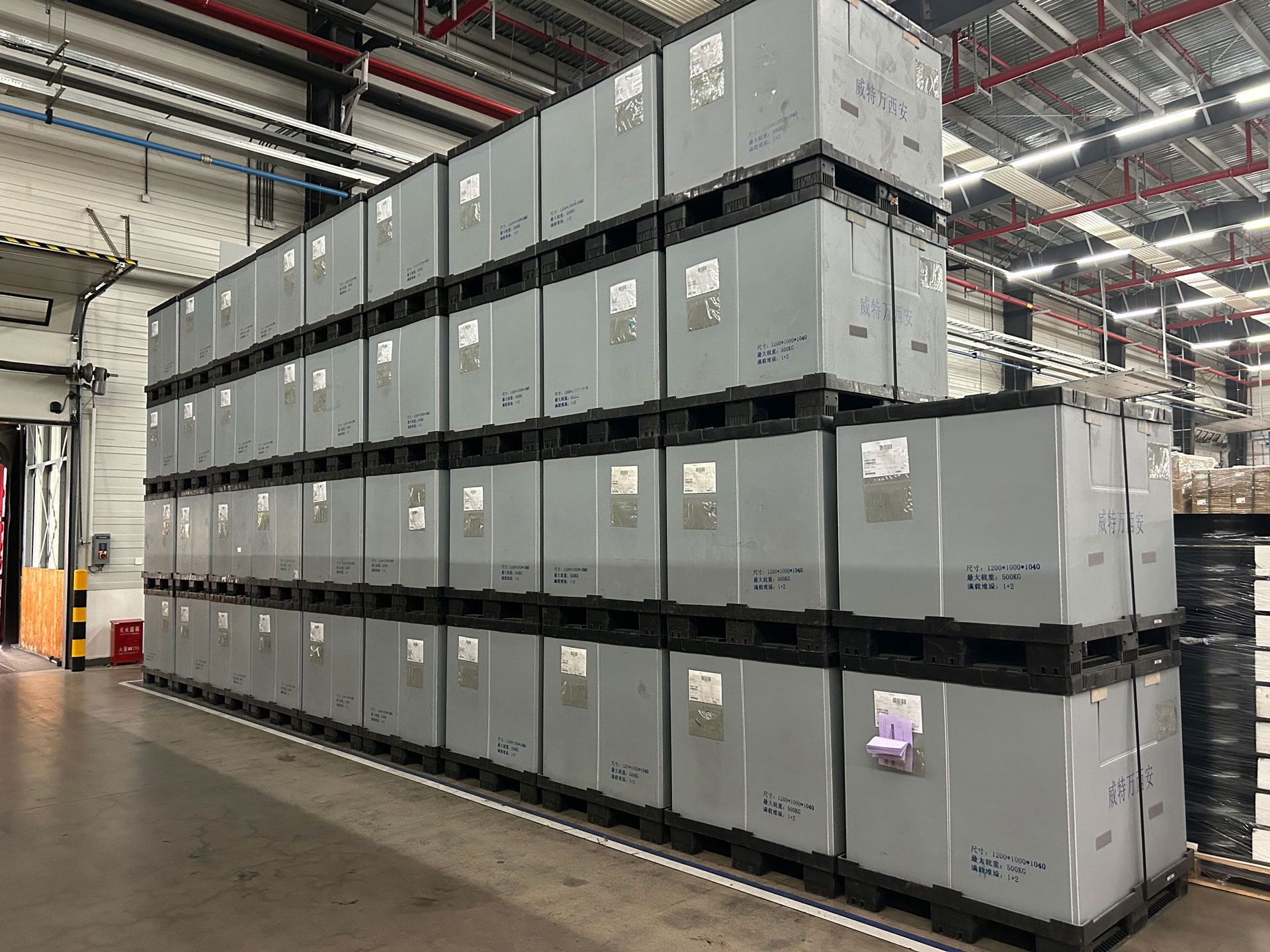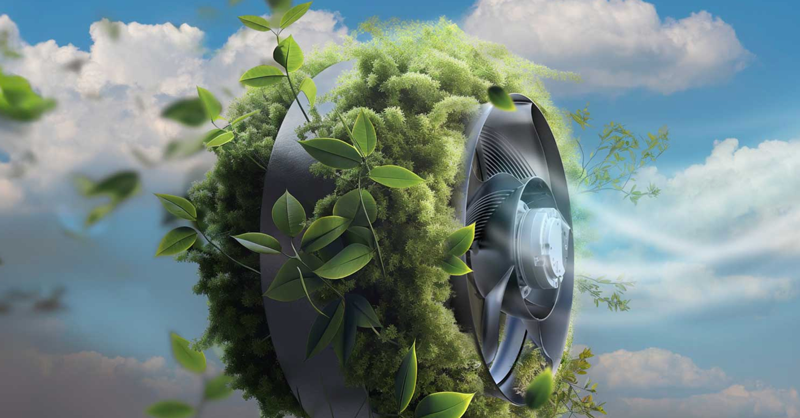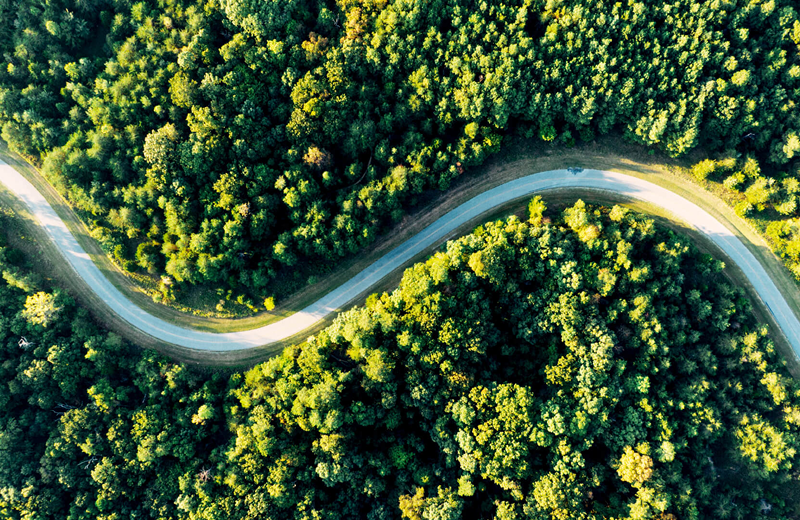Avoidance before reduction
We want to achieve climate-neutral production in the 2025/26 financial year, which corresponds to climate neutrality in Scopes 1 (emissions caused directly within the company) and 2 (emissions generated indirectly from energy procurement). The top priority here is to avoid CO2e emissions. Where this is not completely possible, other levers are used, such as optimizing energy efficiency in the production process, using photovoltaic systems, and purchasing green electricity. Offsetting the remaining emissions that are technically unavoidable or irreducible is another tool available to us, albeit one that we only use as a last resort.
In line with this approach, we have significantly intensified our sustainability efforts in recent years. In the 2022/23 financial year, we already succeeded in reducing our Scope 1 and 2 emissions by 11.4 percent – from 48,043 to 42,549 metric tons of CO2e. In the 2023/24 financial year, we achieved a further reduction of 43.1%, bringing the figure down to 24,203 metric tons of CO2e.
Sustainability Report 2023/24
Internal upgrade
At ebm‑papst, we not only focus on innovative solutions for our customers, but also continuously optimize our own processes. By retrofitting our in-house ventilation systems to the latest generation of ebm‑papst fans, we were able to save around 10 percent on energy. Watch the video to find out more.
Photovoltaics
ebm‑papst is consistently investing in the use of renewable energies in order to significantly increase the proportion of energy generated in-house at its locations. The plants in Hollenbach and Xi’an provide two outstanding examples of this philosophy:
The Hollenbach plant, which has received the Energy Efficiency Award, boasts three photovoltaic systems that, together, generate around 5.7 million kWh/a of the approximately 10 million kWh/a required for the site. At the Chinese plant in Xi’an, a powerful photovoltaic system produces 1.45 million kWh annually, which accounts for more than 25 percent of the plant’s own energy requirements. In the coming years, we are planning further major investments in photovoltaic technologies all around the world in order to further reduce our ecological footprint and sustainably increase energy efficiency at all our location
Energy efficiency
Here at ebm‑papst, we have been focusing for years on improving our energy balance by continuously reducing energy consumption while also increasing efficiency. In the 2023/24 financial year, ebm‑papst consumed 141,066 MWh of energy globally – including electricity, natural gas, heating oil, and fuel – which represents a significant reduction compared to the 155,727 MWh in the previous year. These savings are the result of targeted measures, including the optimization of production processes, the integration of the ISO 50001 energy management standard, the increased use of renewable energies, and the installation of LED lighting.
84.582 MWh
Electricity
37.807 MWh/a
Natural gas
5.723 MWh/a
Heating oil
9.145 MWh/a
Fuels
651 MWh/a
Other
141.006 MWh/a
Total
Wastewater development
In the 2023/24 financial year, ebm‑papst’s global water use increased slightly, from 158 megaliters in the 2022/23 financial year to 168 megaliters. Europe recorded the highest consumption with 108 megaliters – 64.5 percent of our total consumption – followed by APAC with 45 megaliters and the Americas with 15 megaliters.
We have already taken measures to reduce water consumption in the future. For example, we have connected a wastewater treatment plant to our paint shops in Mulfingen, enabling us to reduce their water use from around 66 m³ to 30–40 m³ per week. Thanks to its cascade systems and flushing, the used water is re-used several times before it is treated and fed into the local sewage treatment plant. The same applies to our test center in Hollenbach, which went into operation in 2022, where we also use larger quantities of water as part of individual test series. As only a very small proportion of this is lost through spraying or evaporation, we can feed the majority of our used water resources back into the cycle
As with all other natural resources, we attach great importance to transparency and traceability when it comes to water management. Regular inspections are carried out by the responsible authorities or an independent testing laboratory commissioned by them. These spot checks are carried out in irregular intervals and without prior notice. To date, there have been no complaints from the responsible water authorities, whom we always keep in the loop with regard to all our process and system optimizations.
Innovative waste management
In the 2023/24 financial year, ebm‑papst produced a total of 17,521 metric tons of waste, of which 16,743 tons were non-hazardous waste and 778 tons were hazardous waste. The majority of this waste was made up of recyclable materials such as paper, wood, and metals. In Europe, for example, 3,113 metric tons of paper and paper products were disposed of, together with 2,907 metric tons of metals. In America, the figure was 4,911 metric tons of metals.
The use of reusable plastic collapsible boxes is a small adjustment that has had a big impact on our waste management. With a service life of up to 60 shipments per box, these boxes save around 900 tons of corrugated cardboard every year.





